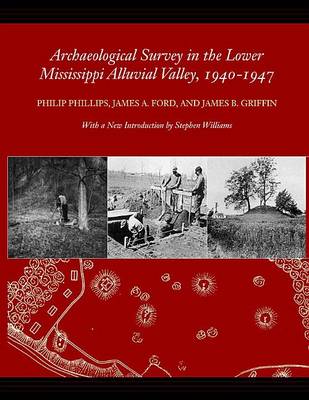A Dan Josselyn Memorial Publication A classic work by three important scholars who document prehistoric human occupation along the lower reaches of the continent's largest river. The Lower Mississippi Survey was initiated in 1939 as a joint undertaking of three institutions: the School of Geology at Louisiana State University, the Museum of Anthropology at the University of Michigan, and the Peabody Museum at Harvard. Fieldwork began in 1940 but was halted during the war years. When fieldwork resumed in 1946, James Ford had joined the American Museum of Natural History, which assumed cosponsorship from LSU. The purpose of the Lower Mississippi Survey (LMS)—a term used to identify both the fieldwork and the resultant volume—was to investigate the northern two-thirds of the alluvial valley of the lower Mississippi River, roughly from the mouth of the Ohio River to Vicksburg. This area covers about 350 miles and had been long regarded as one of the principal hot spots in eastern North American archaeology. Phillips, Ford, and Griffin surveyed over 12,000 square miles, identified 382 archaeological sites, and analyzed over 350,000 potsherds in order to define ceramic typologies and establish a number of cultural periods. The commitment of these scholars to developing a coherent understanding of the archaeology of the area, as well as their mutual respect for one another, enabled the publication of what is now commonly considered the bible of southeastern archaeology. Originally published in 1951 as volume 25 of the Papers of the Peabody Museum of American Archaeology and Ethnology, this work has been long out of print. Because Stephen Williams served for 35 years as director of the LMS at Harvard, succeeding Phillips, and was closely associated with the authors during their lifetimes, his new introduction offers a broad overview of the work's influence and value, placing it in a contemporary context. ""Meant for the expert and informed layman, it sets a standard for archaeological studies.""—Journal of the West ""One of the important classics in the field. . . Incredibly influential over the decades. . . . Enhancing this timeless volume, the new edition contains four very useful indexes (general, site descriptors, pottery descriptors, and other artifacts). . . .This book should not be an old tome gathering dust on the shelf, but a resource in constant use for reference and inspiration. Students of archaeology should read it as an example of one of the first great syntheses. Nobody should conduct archaeological research in the Southeast without knowing it.""—Journal of Alabama Archaeology ""For anyone who has tried long and hard to find a copy of the original, this reprinted volume is a godsend. . . . To say that this 1951 study is a classic is a major understatement. Not only did the volume set the foundation for much of the research conducted within the LMV since that time, it had a significant imapct upon how that research was (and still is) conducted. Names of many of the periods, cultures, and pottery types (even some pottery varieties) that today are commonly employed across the region owe their genesis to PF&G. . . . No archaeologist working in the LMV, and certainly none within the state of Mississippi, should be without a copy. . . . There is no excuse not to have this study now that it is available again at a reasonable price. If you do not yet have a copy, go get one now! You will be very glad that you did.""—Mississippi Archaeology
- ISBN13 9780817311049
- Publish Date 31 December 2003
- Publish Status Active
- Out of Print 4 July 2021
- Publish Country US
- Imprint The University of Alabama Press
- Format Hardcover
- Pages 592
- Language English
